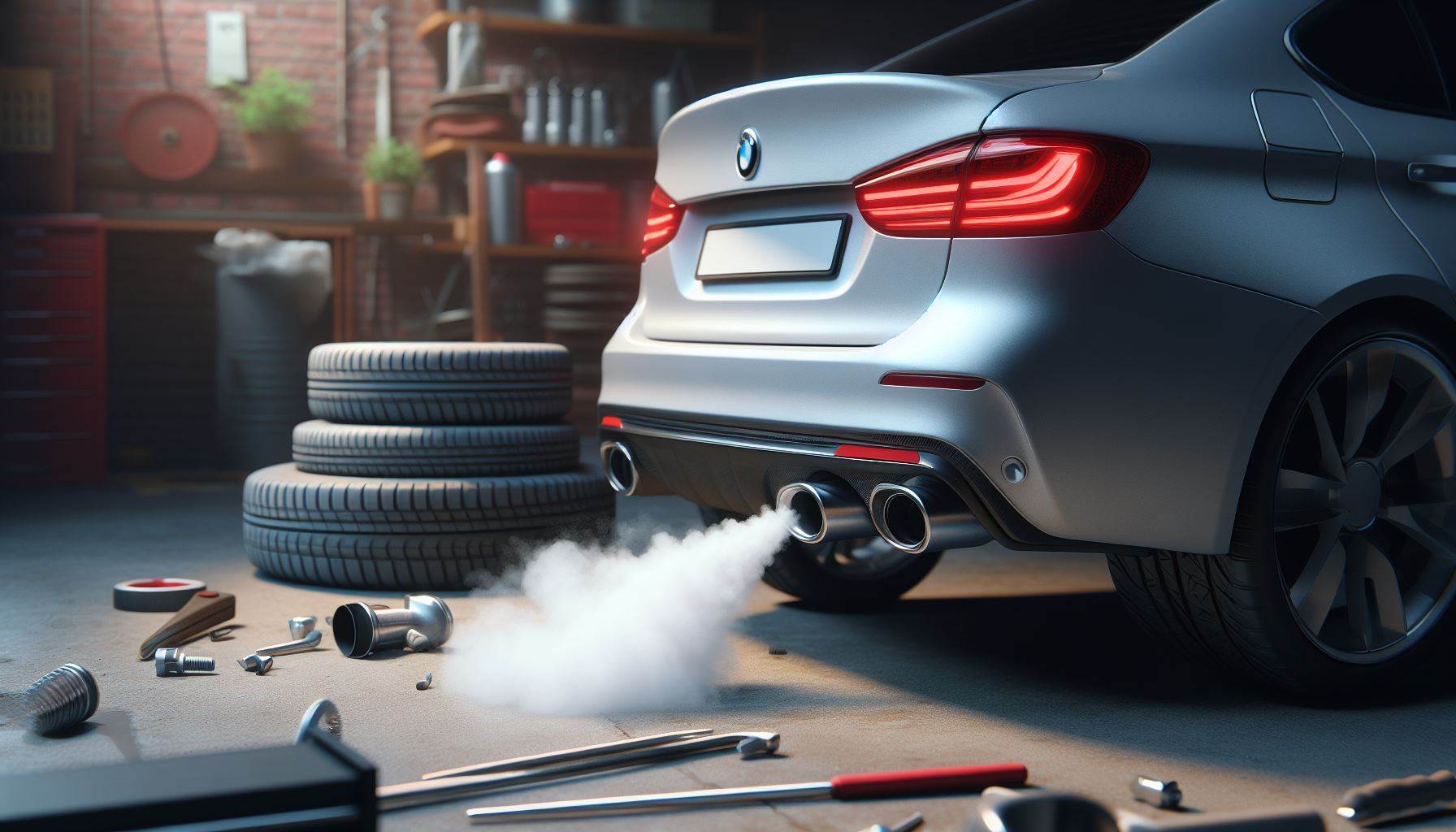How to Repair a Car Exhaust Leak at Home: A Step by Step Guide

Repairing a car exhaust leak at home is a practical way to extend the life of your vehicle, cut down on repair costs, and improve fuel efficiency. This guide will walk you through identifying, assessing, and fixing an exhaust leak with easy-to-follow steps. By following these instructions, you’ll be able to handle this common car issue on your own.
Why Fixing a Car Exhaust Leak at Home is Important
An exhaust leak can negatively impact your vehicle’s performance, increase noise levels, and allow toxic gases to enter the cabin. Fixing it promptly will not only restore your car’s performance but also protect your health and improve fuel economy.
Signs Your Car Exhaust Needs Repair
Before learning how to repair a car exhaust leak at home, it’s essential to know the symptoms:
- Loud noises: A leaking exhaust often produces a louder noise than usual, especially when accelerating.
- Decreased fuel efficiency: A leak can disrupt the air-to-fuel ratio, causing the engine to use more fuel.
- Smell of exhaust fumes: If exhaust fumes are detectable in the car, there’s likely a leak allowing gases to escape.
- Poor acceleration: A leak in the exhaust can reduce engine power, making the vehicle sluggish.
Essential Tools and Materials for Fixing an Exhaust Leak
Repairing a car exhaust leak at home requires a few basic tools and materials. Here’s a list to get you started:
- Jack and jack stands
- Safety goggles and gloves
- Metal brush
- Sandpaper
- High-temperature exhaust tape or patch kit
- Epoxy or exhaust repair putty
- Hose clamps (if necessary)
Step 1: Locate the Car Exhaust Leak
To begin, locate the source of the exhaust leak:
- Lift the Car Safely: Using a jack and jack stands, lift the vehicle and secure it to give yourself room to work under it.
- Inspect the Exhaust System: Carefully examine the exhaust manifold, catalytic converter, resonator, and muffler for any visible holes, cracks, or rust.
- Feel for Leaks: Turn on the engine and, while using a safe distance, feel for escaping air. You may also use a soapy water spray—bubbles will form where there is a leak.
Step 2: Prepare the Exhaust Area for Repair
Preparation is crucial when learning how to repair a car exhaust leak at home. Make sure the area around the leak is clean and smooth.
- Remove Rust and Dirt: Use a metal brush or sandpaper to remove any rust, debris, or loose particles around the leak.
- Dry the Area: Moisture will prevent adhesives from sticking properly, so make sure the area is completely dry.
Step 3: Choose the Best Method to Repair a Car Exhaust Leak
Depending on the type and size of the leak, there are different methods you can use to repair a car exhaust leak at home. Let’s look at each:
For Small Holes: Use High-Temperature Exhaust Tape
High-temperature exhaust tape is a quick fix for smaller holes or cracks.
- Wrap the Leak: Cut a piece of exhaust tape and firmly wrap it around the leak.
- Secure the Tape: Overlap the tape around the exhaust to ensure a tight seal, covering a bit beyond the leak on each side.
For Larger Cracks: Apply Exhaust Repair Putty or Epoxy
For larger leaks, exhaust repair putty or epoxy works best.
- Knead the Putty: Follow the product instructions to knead the putty or mix the epoxy for proper activation.
- Apply Over the Leak: Smooth the putty or epoxy over the hole, pressing it into any cracks.
- Let It Cure: Give it the required time to cure (usually a few hours) before starting the engine.
Damaged Exhaust Pipes: Use Clamps
If the exhaust pipe itself is damaged, exhaust clamps can be an effective solution.
- Position the Clamp: Place a hose clamp around the damaged area of the pipe.
- Tighten the Clamp: Secure it tightly to compress the leak and prevent gases from escaping.
Step 4: Inspect and Test the Exhaust Repair
Once you’ve completed the repair, turn on the engine to check if the exhaust leak is fixed.
- Listen for Noises: The sound of the exhaust should return to normal if the leak has been properly sealed.
- Check for Fumes: Ensure no fumes are escaping from the previously leaking area.
Tips to Prevent Future Exhaust Leaks at Home
Learning how to repair a car exhaust leak at home is valuable, but preventing future leaks can save even more time and hassle. Here are some tips to keep your exhaust system in good condition:
- Regular Inspections: Check the exhaust system every few months for signs of rust, cracks, or loose connections.
- Avoid Short Trips: Short trips cause condensation buildup in the exhaust, leading to rust. Aim for longer drives when possible.
- Protect the Undercarriage: Avoid driving through deep puddles and mud, which can speed up rust and corrosion on the exhaust system.
When to Seek Professional Help for Exhaust Leaks
While knowing how to repair a car exhaust leak at home is a useful skill, some leaks are too severe for DIY fixes. If the leak is extensive, near the catalytic converter, or affects engine performance, it’s best to consult a professional mechanic.
Final Thoughts on DIY Car Exhaust Leak Repairs
Knowing how to repair a car exhaust leak at home allows you to handle minor issues yourself, saving money and extending your car’s life. With the right tools and methods, fixing an exhaust leak can be straightforward and rewarding. Remember to prioritize safety, inspect your repairs, and keep up with routine maintenance to avoid future leaks.
By following this guide, you’ll not only improve your car’s performance but also ensure a safer and quieter ride. Happy repairing!






